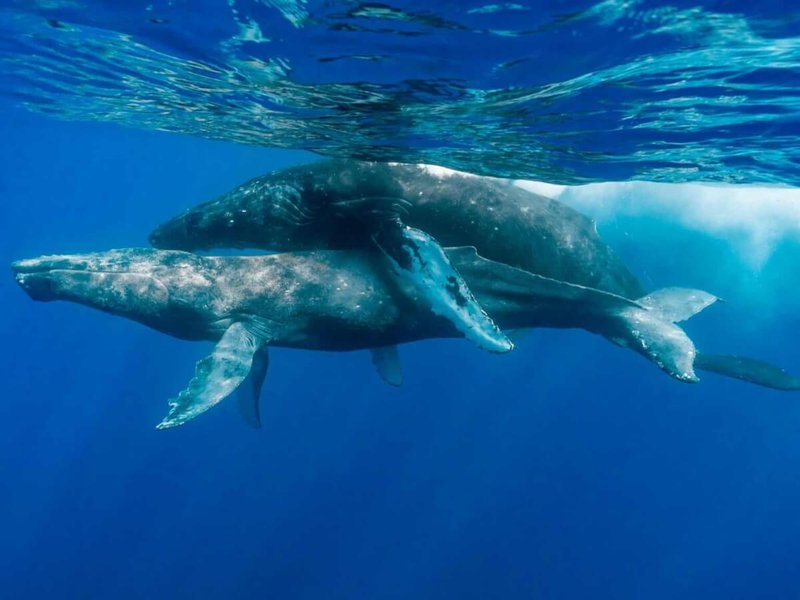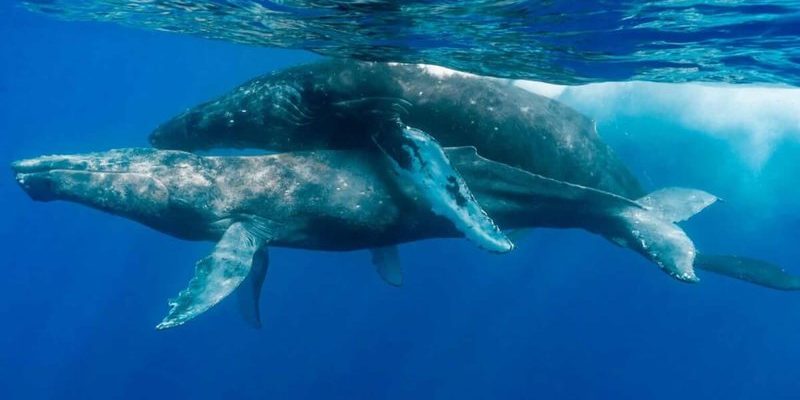
When we think about whales, we might picture them singing in the ocean depths or breaching the surface in stunning displays. But behind those awe-inspiring behaviors lies the less visible, yet equally important, processes of reproduction. Whales, like all mammals, have specific reproductive needs and practices. From courtship rituals to gestation periods, understanding how they reproduce can give us a deeper appreciation of their lives and the role they play in ocean ecosystems.
Understanding Whale Reproduction
Whale reproduction is a complex process that begins with finding a mate. Different species of whales have unique mating habits, but generally, the process involves some form of courtship display. Male whales often sing or make other vocalizations to attract females, much like birds singing to impress potential partners. This communication is crucial, allowing them to establish connections and showcase their health and vigor.
Once a female chooses a mate, the actual mating process can vary. Most whales are polygamous, meaning a single male may mate with multiple females. After successful mating, the female carries the embryo for several months, depending on the species. For example, blue whales, the largest animals on Earth, have a gestation period of about 10 to 12 months. This long period allows the developing calf to grow significantly before birth, providing it a better chance of survival in the wild.
Gestation and Birth of Whales
The gestation period for whales is often long, allowing them to nurture their young effectively. During this time, the mother whale undergoes various physiological changes to support the developing calf. It’s like a marathon, where the mother prepares her body to provide nourishment and protection to her unborn baby.
When it’s time for the baby whale, or calf, to be born, the mother finds a safe area, often in warmer waters. The birth usually occurs tail-first, which helps the calf avoid drowning as it enters the water. Seeing a newborn whale calf is a breathtaking sight. These calves are often around 20 feet long at birth and can weigh up to 3 tons! That’s a lot of baby to love!
Once born, the calf is reliant on its mother for survival. It typically begins nursing immediately, consuming nutrient-rich milk that can contain over 35% fat. This high-fat content is crucial for the calf’s rapid growth during its early months. In some species, mothers will continue to care for their young for several years, teaching them essential survival skills.
Social Dynamics and Calf Rearing
Whales are social animals, and their methods of rearing calves reflect their complex social structures. In species like orcas, also known as killer whales, mothers often form lifelong bonds with their offspring. This family-oriented dynamic helps ensure the survival of young whales by providing support in hunting and learning about their environment.
You might wonder how these social dynamics impact the calf’s development. For instance, in pods of orcas, younger whales watch and imitate older members when hunting. This cultural transmission of knowledge is vital and showcases the intelligence of these animals. Furthermore, the protective nature of these family units increases the chances of calf survival in the vast and sometimes harsh oceanic environment.
The Role of Migration in Whale Breeding
Many whale species are migratory, traveling thousands of miles between their feeding grounds and breeding areas. This migration plays a crucial role in their reproductive success. For example, humpback whales migrate to warmer waters to breed, which provides safer conditions for calving.
During migration, whales often gather in large groups, creating a lively atmosphere filled with songs and interactions. It’s here that they mate and give birth, usually in areas that offer abundant food to support the nursing mothers. This strategy ensures that when calves are born, they have better survival odds due to a favorable environment.
The risks of migration can be significant, though. Predators, such as sharks, and changes in ocean conditions can pose dangers to both mothers and calves. However, this instinctive journey is essential for the continued success of whale populations.
Threats to Whale Reproduction
Despite their incredible adaptations, whales face numerous threats to their reproductive success. Human activities, such as commercial whaling, ship strikes, and pollution, can severely impact their populations. For instance, the decrease in food availability due to overfishing can affect pregnant females’ health, leading to lower birth rates.
Additionally, climate change poses a growing challenge. Altered ocean temperatures can disrupt migratory patterns and breeding grounds. When whales can’t find suitable conditions to mate or give birth, their populations can decline rapidly.
Conservation efforts are crucial in protecting these magnificent creatures. Various organizations work tirelessly to monitor whale populations, establish marine protected areas, and advocate for sustainable practices. By addressing these threats, we can help ensure that whales continue to thrive in our oceans.
The Importance of Understanding Whale Reproduction
Understanding the breeding and reproduction of whales is vital for their conservation and protection. When we learn about their life cycles, we better appreciate the intricacies of their existence and the challenges they face. This knowledge can inspire us to take action, whether by supporting conservation efforts or advocating for policies that protect marine environments.
Moreover, studying whale reproduction can aid scientists in monitoring whale populations’ health and viability. As we note changes in reproduction rates or calf survival, we can identify potential environmental issues and address them proactively.
Whales are remarkable creatures that play essential roles in ocean ecosystems. By fostering a deeper understanding of their reproduction and breeding behaviors, we pave the way for healthier oceans and more sustainable interactions with these incredible animals.
In conclusion, the breeding and reproduction of whales is a captivating subject that showcases the complex lives of these marine giants. From their courtship rituals and nurturing behaviors to the challenges they face, there’s so much to learn and appreciate. By supporting efforts to protect them and their habitats, we can ensure that future generations will have the chance to experience the awe of whales in our oceans.

